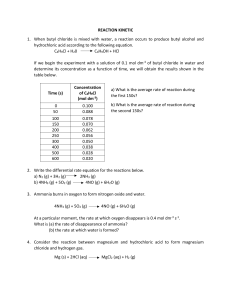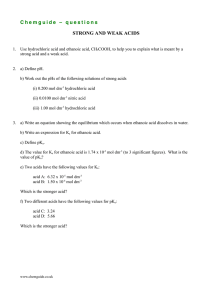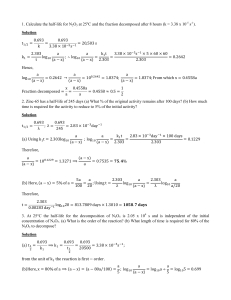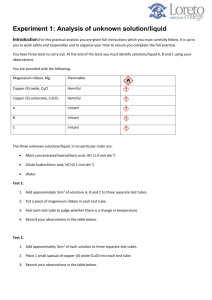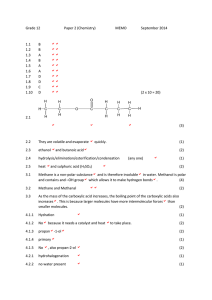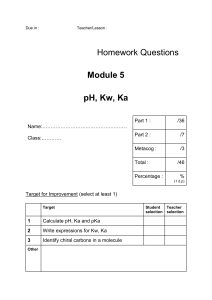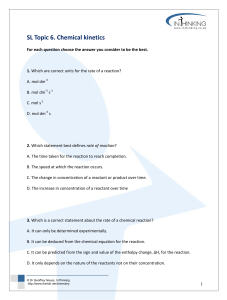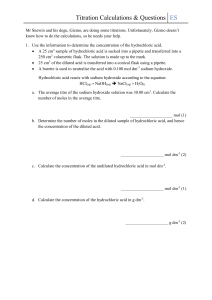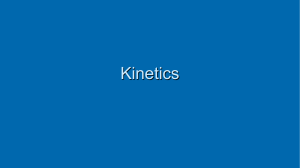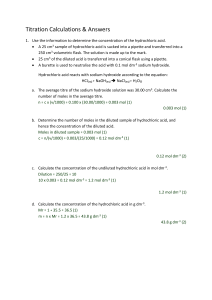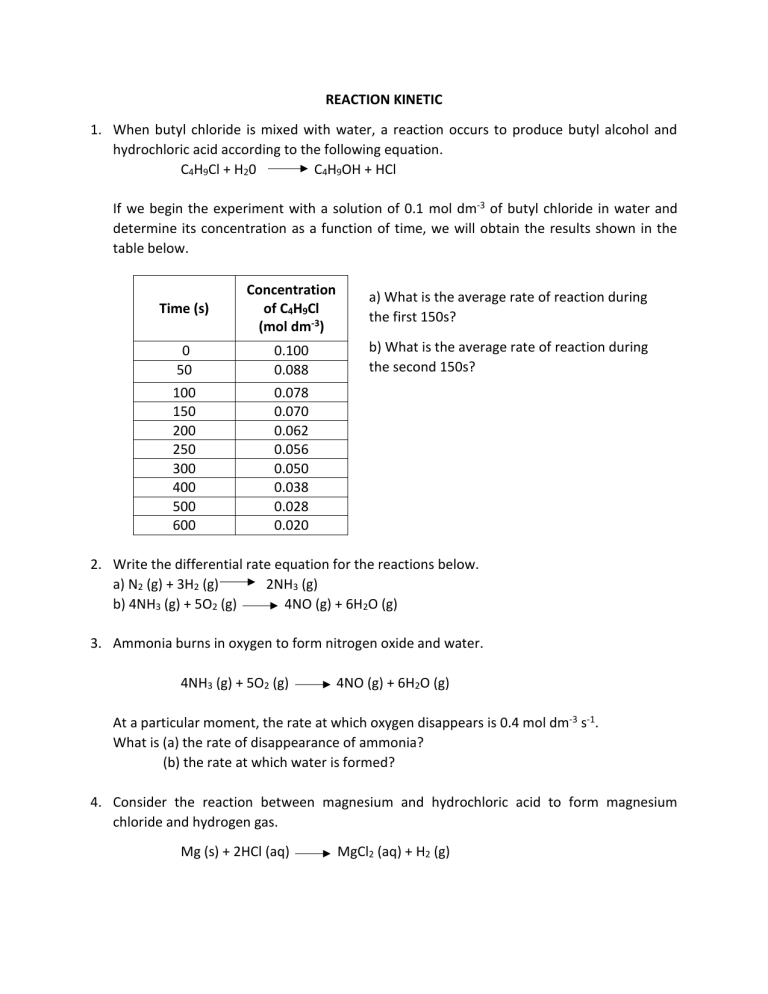
REACTION KINETIC 1. When butyl chloride is mixed with water, a reaction occurs to produce butyl alcohol and hydrochloric acid according to the following equation. C4H9Cl + H20 C4H9OH + HCl If we begin the experiment with a solution of 0.1 mol dm-3 of butyl chloride in water and determine its concentration as a function of time, we will obtain the results shown in the table below. Time (s) Concentration of C4H9Cl (mol dm-3) a) What is the average rate of reaction during the first 150s? 0 50 100 150 200 250 300 400 500 600 0.100 0.088 0.078 0.070 0.062 0.056 0.050 0.038 0.028 0.020 b) What is the average rate of reaction during the second 150s? 2. Write the differential rate equation for the reactions below. a) N2 (g) + 3H2 (g) 2NH3 (g) b) 4NH3 (g) + 5O2 (g) 4NO (g) + 6H2O (g) 3. Ammonia burns in oxygen to form nitrogen oxide and water. 4NH3 (g) + 5O2 (g) 4NO (g) + 6H2O (g) At a particular moment, the rate at which oxygen disappears is 0.4 mol dm-3 s-1. What is (a) the rate of disappearance of ammonia? (b) the rate at which water is formed? 4. Consider the reaction between magnesium and hydrochloric acid to form magnesium chloride and hydrogen gas. Mg (s) + 2HCl (aq) MgCl2 (aq) + H2 (g) When the concentration of hydrogen is increasing at 0.32 mol dm-3 s-1, what is the rate of decrease of hydrochloric acid? 5. The data below is for a substance A. Time (min) 0 2 -3 [A] (mol dm ) 1.00 0.79 a) What is the order of reaction with respect to A? b) Calculate the rate constant for this reaction. 4 0.59 6 0.40 6. Bromine reacts with methanoic acid according to the equation Br2 (aq) + HCOOH (aq) 2Br- (aq) + 2H+ (aq) + CO2 (g) The table below shows the rates of reaction at specific concentrations. [Br2] (10-3 mol dm-3) Rate (10-5 mol dm-3 s-1) 8.0 2.75 7.0 2.40 5.0 1.70 4.0 1.35 2.0 0.70 Show that the reaction between bromine and methanoic acid is a first order reaction by calculation.
